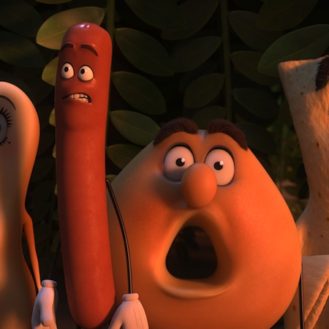By: Addison Wylie
Finding 3Dmo, an alternate title that unfortunately isn’t sticking no matter how much I tweet it, is Disney’s latest post-conversion effort.
Bouncing back from January’s underwhelming post-conversion work on Disney’s classic The Beauty and the Beast, Finding Nemo 3D is an excellent example as to why these post-conversions are not a waste of time or money. Like they did with The Lion King 3D, Disney can use this new technology to make their more modern animation punch out even more.
It was nice revisiting Finding Nemo. It’s a film I hadn’t seen in a while, but a film I was glued to when I saw it in theatres in 2003. Viewing it nine years later, Finding Nemo still has me hook, line, and sinker but the story resonates even more, and the character of Marlin (voiced by Albert Brooks) feels more relatable. I can’t even imagine how that character will speak to me when I’m watching the movie with children of my own.
The underwater setting is utilized well, not taking advantage of too many deep sea quips, and the jokes as well as the emotion behind our lead fish and the quest to find the missing Nemo is ingenious writing and a great reminder that Pixar has incredible staff who care about making thoughtful and highly enjoyable movies.
Now, like always, the real question. How is the 3D?
As established right off the top, it’s worth checking out. It’s never throwing stuff out at the screen in a blatant manner and it doesn’t feel like a post production crew had gone in and added more effects to utilize the 3D technology more.
In fact, the wonders of the 3D in Finding Nemo are very subtle. It’s been hard to explain to fellow film lovers face-to-face just how subtly awesome the technology has been in this revamping. So, let’s see how I do with text-to-face.
As we’ve all seen in technology-savvy outlets, beach and underwater footage is a marvel to watch in 3D. The same goes with Finding Nemo 3D but the protruding subtleties lie within the character design of these fish.
Each fish has two prominent apexes, one at the snout of the fish and one at the end of the back fin. Meaning, these characters all come to a point in their own way. Even though the film is never pushing objects in our faces, these points are constantly sticking out at us; making us feel like these fish are within reach.
The fish could just be floating in one place and still feel like the fins are slowly flowing towards us, especially when the film will cut to a two-shot where one fish is in the foreground, has its back to us, and is slowly moving its back fin.
Another example of these subtleties would belong with the pelicans. The Australian pelican, Nigel, who helps Marlin and Dory find little lost Nemo has a memorable part in the film and often acts as an escape vehicle for the fish. The moments where the bird is flying away from danger are the only parts that feel like anything is being highlighted extendedly in 3D, even if these scenes were in the original cut.
But, when the pelicans are talking or swinging their beaks around, that point in their beak that is constantly swinging around eases its way out at us. It makes for a very cool but quiet effect that we all enjoy to ourselves, thinking as if you’re the only person in the theatre that noticed this.
Where The Lion King 3D showed us how many layers of animation cells the extensive team of animators used for one mere shot, Finding Nemo 3D shows us just how sleek and detailed computer animation can be when in the right hands. Another highlight is that the 3D glasses never feel like they diffuse the colourful scenery by much. Well done, colour correction team!
What else can I say? A fantastic movie with a fantastic 3D conversion serves as a perfect time at the movies.




Be the first to comment